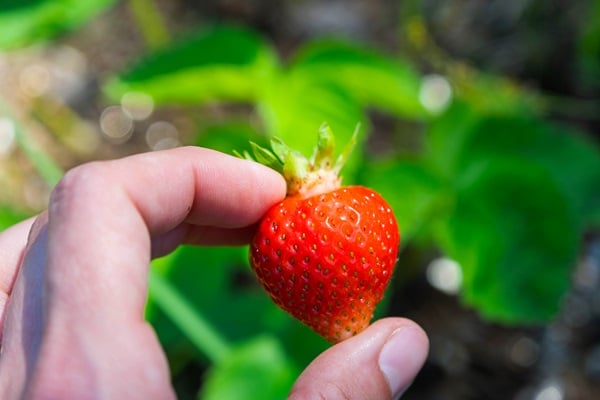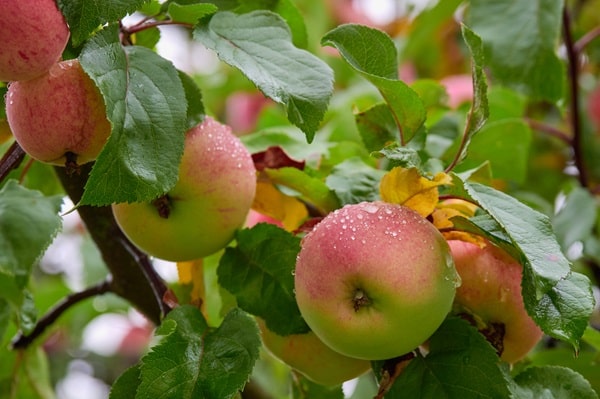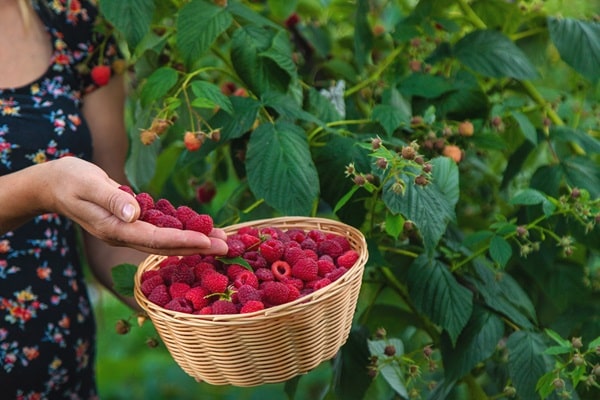Gardening, an age-old leisure pursuit, offers not just a bounty of fresh produce but also a profound sense of accomplishment and tranquility. Venturing into the cultivation of fruits in one’s garden opens up a world of healthful eating and sustainability right at one’s doorstep. This guide illuminates the path for beginners, showcasing a selection of fruits that promise ease of growth, minimal care, and the delightful reward of garden-to-table freshness. From the tangy sweetness of strawberries to the robustness of apple trees, each fruit selection is tailored to suit even the most novice gardener, ensuring a successful foray into the world of home gardening.
Contents
Strawberries: A Sweet Starter

Strawberries symbolize the quintessence of home gardening, offering an early reward for the novice gardener’s efforts. These ruby gems are not only versatile, thriving in beds, containers, or even hanging baskets, but also remarkably forgiving to grow. The key to their cultivation lies in selecting the right variety—everbearing strawberries present a continual harvest throughout the growing season. In contrast, June-bearing varieties concentrate their bounty in early summer. Soil enriched with organic matter and a sunny location set the stage for their prolific yield.
The joy of harvesting strawberries extends beyond their luscious taste; it’s a venture into gardening that promises immediate gratification. Regular watering, especially during dry spells, and a vigilant eye for pests such as slugs and birds are essential in safeguarding this treasure. As strawberries spread through runners, managing their growth ensures a tidy garden and maximizes fruit production. The anticipation of plucking the first ripe berry of the season is a moment of pure delight, marking the beginning of a fruitful gardening journey.
Tomatoes: Versatile and Abundant

Embarking on tomato cultivation introduces gardeners to a world where versatility meets abundance. Tomatoes, with their myriad varieties, adapt to a spectrum of climates and spaces, from sprawling gardens to compact urban balconies. Cherry tomatoes, in particular, are lauded for their ease of growth and bountiful yield, making them an ideal choice for beginners. Starting tomatoes from seed indoors or transplanting young plants outside after the last frost sets the foundation for a successful harvest.
The secret to thriving tomato plants lies in consistent care—adequate sunlight, regular watering, and the support of stakes or cages to encourage vertical growth. As tomatoes flourish, they demand attention to ward off common ailments such as blight or pests like the tomato hornworm. Pruning and pinching off suckers improve air circulation and fruit size, showcasing the gardener’s role in nurturing their crop to fruition. The satisfaction derived from harvesting plump, home-grown tomatoes, whether for fresh salads or savory sauces, epitomizes the joy of gardening.
Lemons: Zesty and Full of Flavor

Lemons add a zesty flair to the home garden, their citrus glow symbolizing the sun’s energy captured in fruit form. Surprisingly adaptable, lemons can thrive in the ground in warmer climates or as container plants in cooler regions, bringing a touch of the Mediterranean to any garden. The choice of a dwarf variety suits the space constraints of container gardening, offering abundant fruit in a compact form. A south-facing window or a sun-drenched patio becomes the ideal spot for these citrus jewels to flourish.
Caring for lemon trees involves a commitment to their well-being through regular watering, ensuring the soil remains moist but not waterlogged, and feeding with a citrus-specific fertilizer to support their heavy fruiting. Winter protection is crucial for lemons in cooler climates, often necessitating a move indoors or to a greenhouse. The patience required in waiting for the first harvest is rewarded with fragrant blossoms and the eventual yield of tangy lemons, ready to enhance culinary creations or simply to be enjoyed as a refreshing slice in a glass of water.
Apples: A Hardy Choice

Apples stand as a testament to the gardener’s patience and foresight, embodying the phrase “to reap what you sow.” Dwarf apple trees, in particular, offer a manageable option for personal gardens, with the added benefit of earlier fruiting than their full-sized counterparts. Selecting disease-resistant varieties minimizes maintenance and ensures a healthier orchard. Planting more than one variety enhances cross-pollination and, consequently, fruit set.
The cultivation of apple trees underscores the importance of seasonal care—from the pruning in winter to promote healthy growth to the thinning of fruit in early summer to ensure larger, quality apples. The anticipation builds from the blossoming of the first delicate flowers to the gradual maturation of the fruit, culminating in the harvest season. This cyclical process not only connects the gardener to the rhythms of nature but also instills a sense of responsibility and reward. Watering, especially during dry periods, and vigilant pest control are crucial to safeguard the burgeoning fruits. As the seasons change, the apple tree stands as a steadfast symbol of the gardener’s labor, promising a harvest that is both bountiful and gratifying.
Blueberries: Low Maintenance Superfood

Blueberries, the superfood of the garden, offer a wealth of nutritional benefits and are surprisingly straightforward to cultivate. The secret to their success lies in the soil—they thrive in acidic conditions, which can be achieved through the incorporation of peat moss or sulfur. A location bathed in sunlight ensures the healthiest growth and fruit production. Blueberries are a testament to the adage “good things come to those who wait,” as plants typically bear fruit in their second or third year.
Blueberries require minimal ongoing care, emphasizing their appeal to beginner gardeners. Mulching helps retain soil moisture and acidity, reducing the need for frequent watering. Pruning older branches in late winter encourages new growth and larger berries. The delight of picking fresh blueberries straight from the bush is unmatched, offering a sensory experience of taste, sight, and touch. This easy-to-grow fruit not only enriches the garden with its beauty and bounty but also supports a healthy lifestyle.
Raspberries: Bountiful Harvests

Raspberries promise a rewarding harvest, with their bramble bushes offering sweet rewards year after year. Choosing between summer-bearing and everbearing varieties allows gardeners to tailor their harvest to their preferences. Raspberries require a sunny spot and well-drained soil, with a simple support system to keep the canes upright and productive. The initial effort in setting up and planting is soon offset by the ease of care and the pleasure of harvesting.
The key to abundant raspberry crops lies in regular maintenance. Pruning is essential—removing dead canes and thinning out the bushes ensures air circulation and reduces disease risk. Mulching retains moisture and suppresses weeds, further simplifying care. The joy of harvesting raspberries, whether for immediate consumption, freezing, or jam-making, is a highlight of the summer and early fall, offering a truly home-grown taste.
Peaches: Juicy and Rewarding

Peach trees embody the warmth and generosity of the summer season, their fruits offering juicy sweetness. Dwarf varieties are particularly suited to home gardens, where space may be limited, but the desire for lush, fruitful trees is not. Selecting disease-resistant types and providing full sun exposure are foundational steps toward a successful peach harvest. The care of peach trees, while requiring a bit of attentiveness, is a rewarding endeavor, teaching lessons in patience and attentiveness.
Seasonal care, including pruning for shape and health in the early spring and thinning the fruits to prevent overburdening the branches, ensures a harvest of sizable, succulent peaches. Watering, especially during the fruit development stage, is crucial to achieving juicy outcomes. The tactile pleasure of plucking a ripe peach from one’s tree is unparalleled, offering a direct connection to the fruit of one’s labor, both literally and figuratively.
Figs: Sweet and Unique

Figs, with their distinctive flavor and texture, add an exotic touch to the home garden. They are surprisingly adaptable, thriving in a range of climates, with certain varieties suited for cooler temperatures. Container gardening is a viable option for fig trees, particularly in regions with harsh winters, allowing for mobility and protection from the elements. A sunny position and regular watering underpin their success, with minimal additional care required.
The maintenance of fig trees is straightforward. The main tasks are watering to keep the soil moist and winter protection in colder zones. Pruning is minimal, usually just to maintain shape and remove dead or diseased wood. The harvest period is a time of anticipation and reward as the unique fruits ripen and offer their rich, sweet bounty. Figs are a testament to nature’s diversity and abundance, bringing a taste of the exotic to the garden.
Final Thoughts
The cultivation of fruit in one’s garden is an enriching endeavor, bringing not only the tangible rewards of fresh produce but also the intangible joys of connection to nature, patience, and the satisfaction of nurturing life. From the sweetness of strawberries to the exotic allure of figs, each fruit chosen for its ease of growth offers a gateway into the world of gardening. This guide aims to empower beginners to embark on their gardening journey with the assurance that the fruits of their labor will be bountiful and rewarding. The garden is a canvas, and with these fruits, it becomes a masterpiece of flavors, colors, and life.